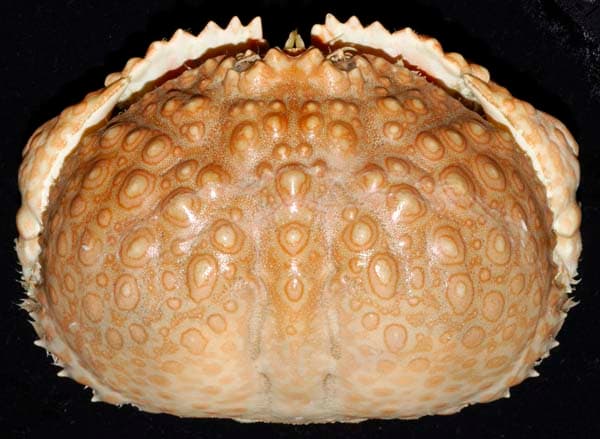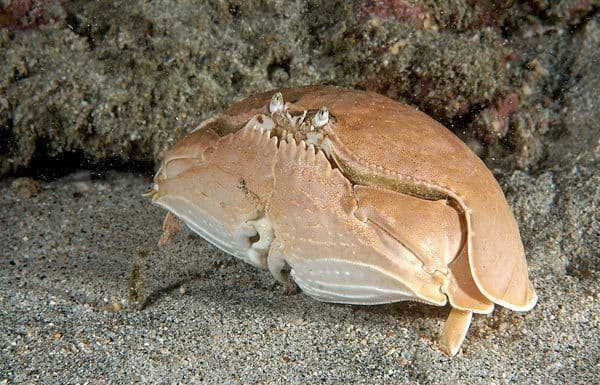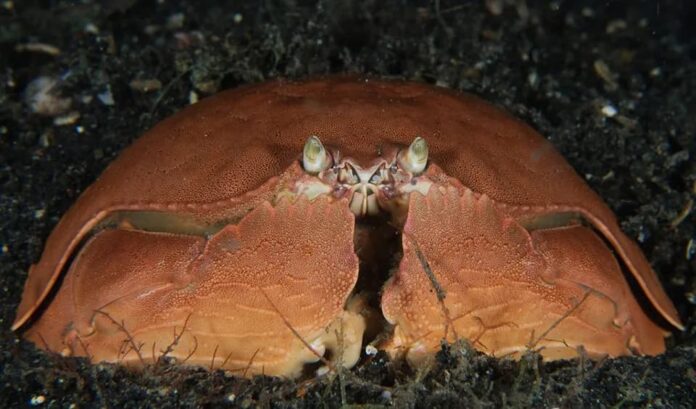The shame-faced crab or Japanese shame-faced crab looks like it is always shy and has something to hide. This large crab has a very unique appearance and behavior, and that is enough for us to be curious about them. It got its name because it was originally discovered in Tokyo Bay, Japan but it has a wider distribution. Want to find out more? Every useful information about the shame-faced crab is below for you to learn about.
1Appearance

The crab has a yellow and red coloration, and there are tubercles on its 15-centimeter-long carapace. A shame-faced crab is probably the easiest to recognize, and the pictures say it all. The oversized claws meet in the middle like two pieces of jigsaws joining together; hence the name. However, it has nothing to do with shame like its name suggests. When disturbed, this crab folds its pincers in front of its face, and that’s what we commonly see. But that’s not all, it also retracts its walking legs to form a compact and well-armored box-like structure. This is actually a defense mechanism when it senses danger, and it keeps the crab safe from its predators. Since their eyes and legs are predators’ favorite parts, it is compulsory to protect those parts by making them inaccessible.
2Behavior
As an ambush hunter, a shame-faced crab is inactive most of the time. It buries itself in the sandy bottom, showing only its eyes, antennae, and the upper parts of its shell. The coloration of its shell makes a perfect camouflage, keeping it invisible to both predators and prey. This crab uses its huge claws to excavate the sand while its back legs burrow the crab backward into the sand. That way, the crab will sink downward into the sand, and spotting one can be a bit of work.
3Feeding & Habitats

As predators, these box crabs feed on mollusks that they can catch such as clams, mussels, oysters, and snails. That right pincer is not only for face coverage but also for breaking open shells of their prey. If your finger is caught in this claw, there is no escape unless you break the claw off of the crab. More than that, the hinged part of the claw has a large accessory tooth that the crab uses as a vice. As for its left pincer, it is sharper and longer which allows the crab to pick out the soft tissues to feed. Originally, the shame-faced crab was found in Japan’s waters, especially in Tokyo Bay. However, they have been recently found in Africa, the Red Sea, and Western Australia also. Across their range, they inhabit shallow muddy and sandy areas where they can bury themselves and hide.
Related Post: Masked Crab Facts




